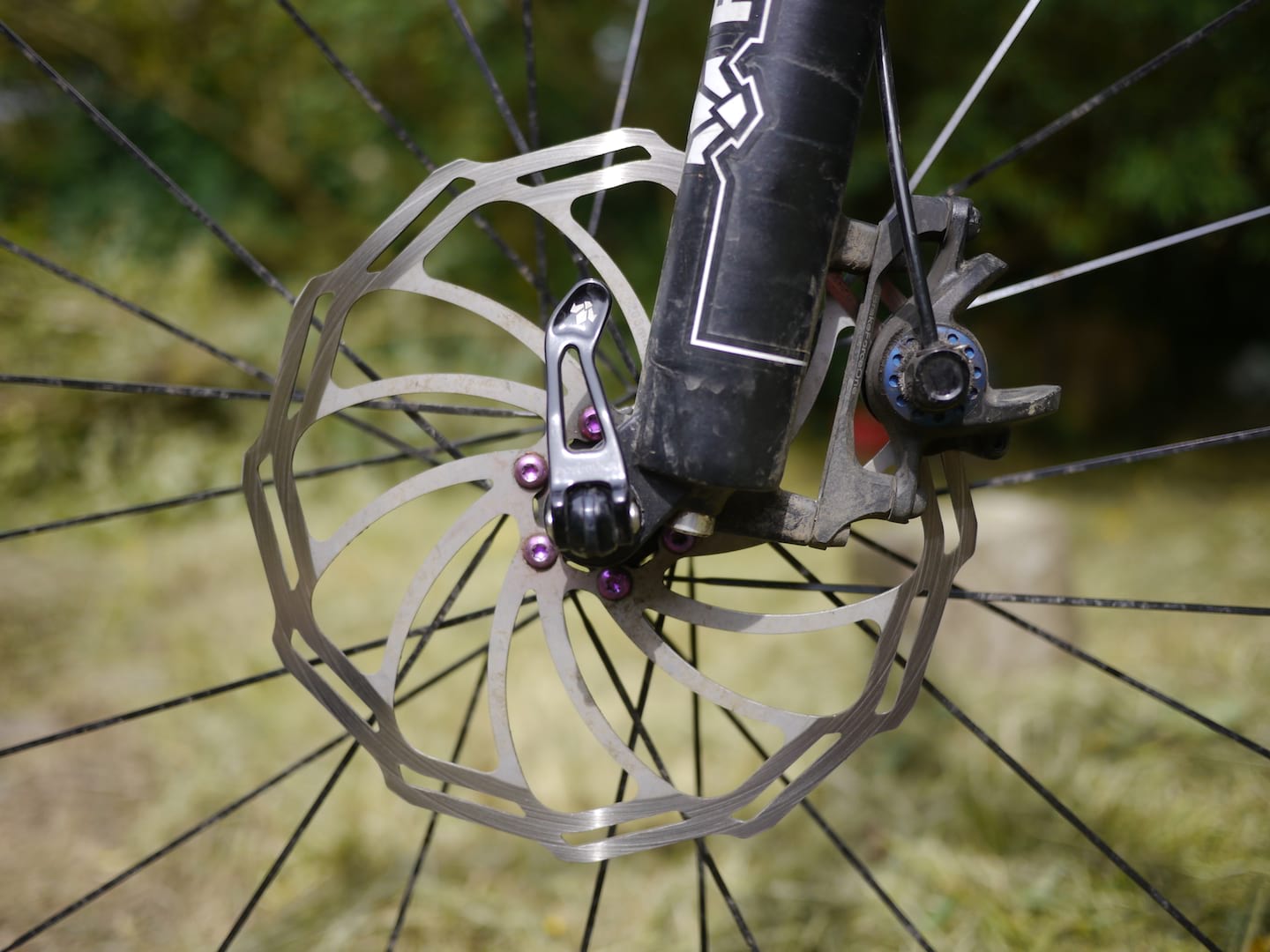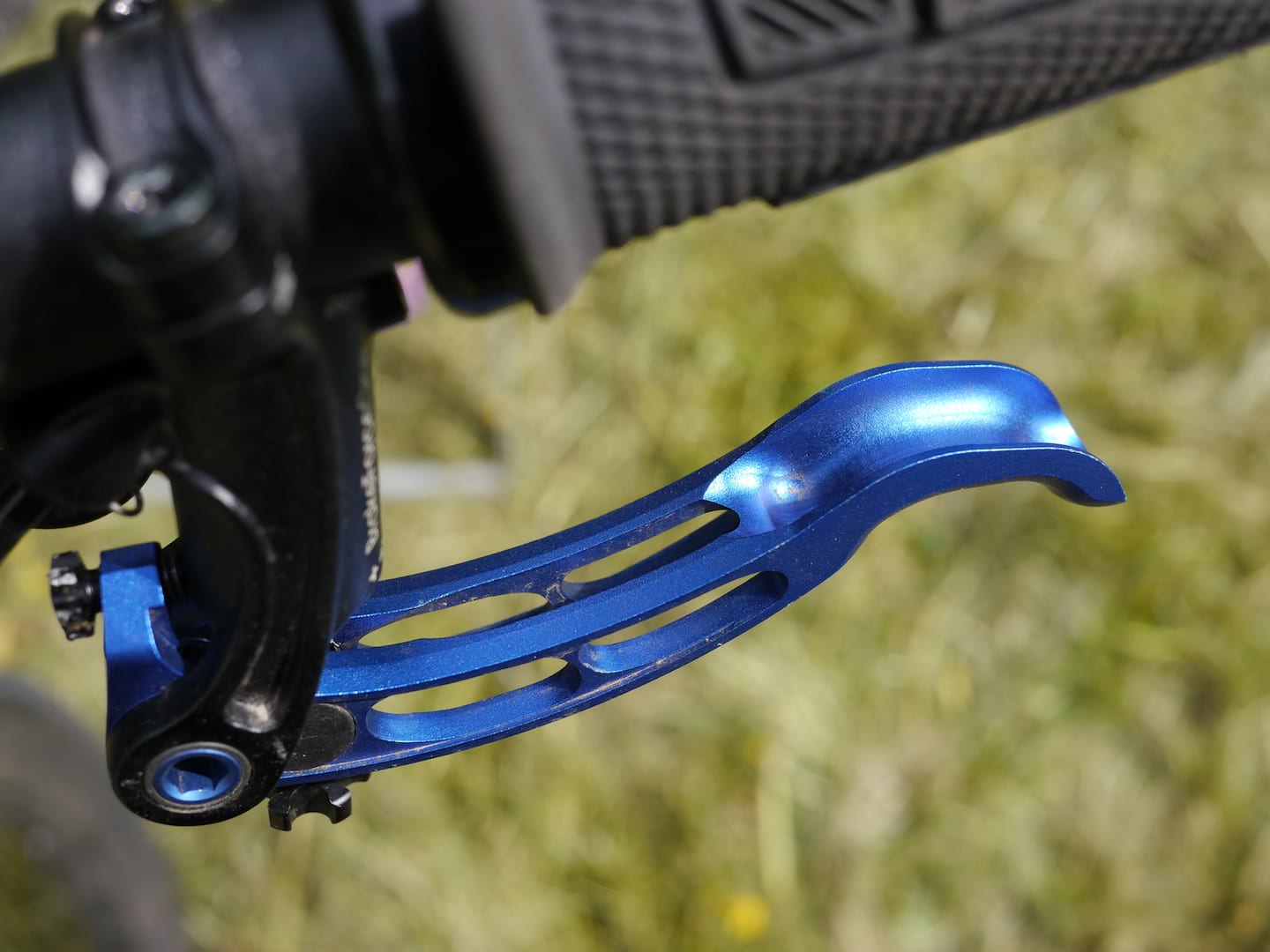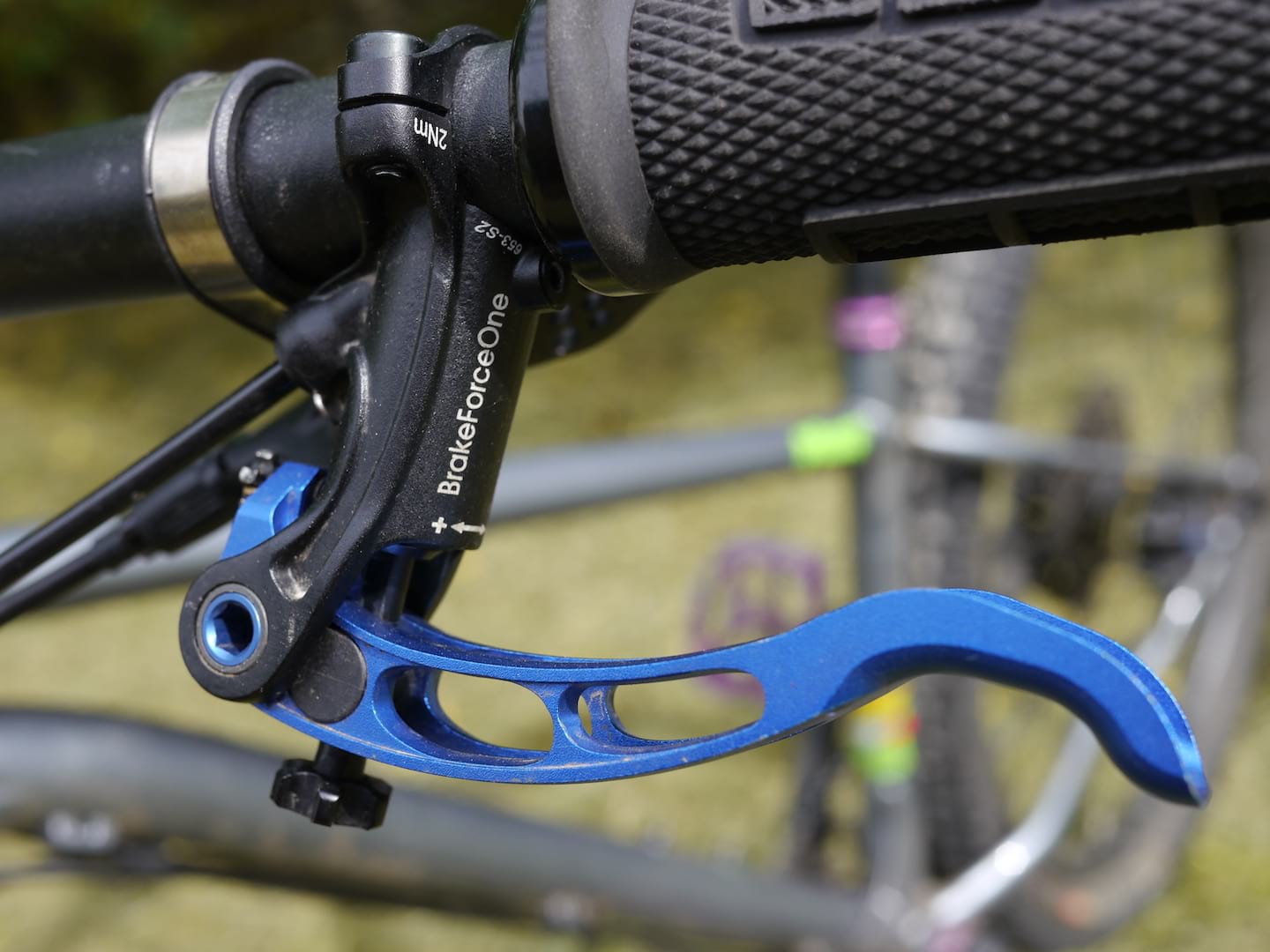This isn’t the first time we’ve tested the H2O from Brake Force One. We first reviewed them in our disc brake group test last year, but they weren’t exactly quirk-free. BFO then sent us out a revised version of the H2O brakes, so we put them in the hands of David Hayward to give them a right pasting through winter and spring, to see if the improvements could change our opinion. Over to David!
If you mention water and disc brakes in the same sentence among mountain bikers, a few will mention trials riders using water filled brakes, but more will predict the apocalypse. With most disc brakes, they might be right, but not these. Brake Force One have designed the H2O brake around a 80/20 water/glycol mix, which is similar to the antifreeze used in cars.
This is the second set of Brake Force One’s (BFO) H2Os we’ve tested, with a previous version in last year’s magazine grouptest of disc brakes (read the full review here). The main difference between this set and the last one is they’ve changed the power curve a little, and consequently the lever feel too. More on that later though.

Setting Up
Brake Force One H2O’s use a two piston calliper rather than a four piston one, but the pistons are enormous to give extra braking force. Despite the enormous callipers, they’re also incredibly light. With some variance for hose length, a set of H2Os weighs just 386g. Yes, for the pair. Considering a set of Magura’s lighter brakes comes in at about 550g, and equivalent Hopes much heavier than that, H2O’s are impressively light. More on how they compare below.
Latest Singletrack Merch
Buying and wearing our sustainable merch is another great way to support Singletrack
Pads are easy to install, as they use Magura’s Marta design with a hooked back plate and retaining pin. There’s no putting pads in from the top, as the calliper is completely sealed up there, but on the plus side that’s a bit of extra winter-proofing.

The brakes are available with 1- or 2-finger levers, and like the last set, this one arrived with the 1-finger setup. The build hasn’t really changed externally (I’ve installed and run both versions), so as with the last set: the levers require a lot of finger wrap so are more suited to big fingers, and the sticky pads that go against the handlebar tend to fall out (though this doesn’t hinder clamping to the bar).
It’s worth mentioning again how easy it is to bleed and shorten hoses. A retaining pin sits under the brim of a connector on both lever and caliper. Remove the pin, push the connector down, and the hose pulls out with a gentle tug. Push back in as far as you can, reinsert the pin to pull the connector away from the caliper or master cylinder, and it grips the hose firmly. No compression olives or barb fittings required, just a tool to trim and dress the hose end.

The H2O bleed kit (sold separately for €32.90) uses two syringes with threaded couplers. Just fill, connect, then pump back and forth to get all the air out. The threaded fittings plus the low viscosity of the water really speed the process up, also reducing cleanup.
The Ride
The difference in feel between the previous version and this one is immediately noticeable, and that’s because these new versions have some internal alterations to BFO’s brake booster, which gives the brakes a two stage power curve. Compared to the last version, that curve is now smoothed out a bit and sits more in line with expectations users might have from other brakes. The lever feel is still a little soft, but that belies the amount of power on tap.
On the previous set, the bite point was almost immediate, with the lightest feather touch required to modulate. Within the first third of the lever travel, the older brakes brought wheel-locking, pelvis-ejecting power to bear. As a bit of a fan of on-off brakes, this wasn’t necessarily a problem for me, but the power was on tap so early I did have to consciously alter my riding style. It encouraged me to brake less, as any kind of panic braking could get dangerous.

With the new version, it’s much easier to swap bikes without having to consciously recalibrate your braking technique. These newer H2O’s aren’t lacking in power compared to the old ones, it’s just later in the curve. You can still lock a wheel quite easily if you squeeze hard, but with the update I’ve defintely had fewer nads-flying-toward-stem moments.
As with the last set, the water did not boil and the world didn’t end, not even when grudgingly dragging them for the sake of testing. Thanks to April’s wild extremes of weather, I got to test in both arctic and heatwave conditions on the same trails. There were no problems at either extreme, with the brakes delivering power consistently.
And oh, what a lot of power! I’ve mainly run Magura MT7’s, Shimano XT’s and Hope M4’s over the past five years, and the H2O’s have more stopping power. Even with the gentler power curve, by the time you’re halfway through the lever travel it’s done most of what an XT brake can, and there’s still more power to go if you haven’t already locked the wheel.

The amount of stoppage they’ve packed into such a lightweight package is impressive, but comes at some cost. One is that the braking system is sealed so, unlike most disc brakes, not self adjusting. As the pads wear, the pistons move closer to the discs, which sucks some fluid out of the master cylinder. Consequently, mid-ride you’ll occasionally notice your levers have started to rattle, and need to take up the slack with a manual adjustment. Overall adjustment range is minimal, but enough to get the lever blades into a comfortable position.


The other weakness, and one of the ways BFO have saved weight, is the lightweight hose. I’ve never been a fan of under-BB hose routing, as it seems like an accident waiting to happen, and with these it did. A rock snipped the hose cleanly in two, leaving me to limp down the rest of a descent with a foot down and just one brake operational. As mentioned above, replacing the hose was a quick job though.
Overall
Rather than push out its own variant on a four calliper design, Brake Force One has struck out and come up with something interesting and different. The lever feel is divisive, the adjustments a bit lacking, and it’d be nice to have a tougher hose upgrade. In terms of raw stopping power to weight though, there’s little out there that compares to these.




